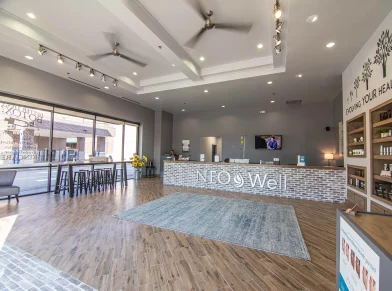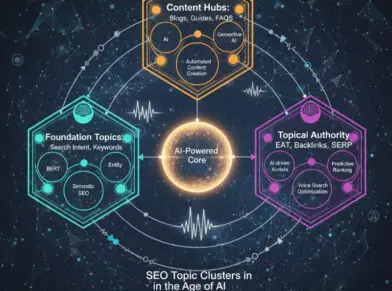Improving Workplace Culture During Trying Times
Quick quiz: Which of the following statements are true?
- 51% of people feel more loyal to their organization since the beginning of the pandemic.
- 37% of employees believe company culture has improved since the beginning of the Covid-19 crisis.
- 47% of people say they’ve felt burned out since the beginning of the COVID-19 crisis.
All statements are true, according to a study by Quartz and Qualtrics. What does this mean for your company?
It means that many businesses are doing a good job of keeping employees happy during these difficult times*. It also means that good organization culture is more important than ever. Losing a good employee to burnout is a shame for companies and workers alike (and it costs them both money).
How to improve your company culture and keep those valuable employees? Begin by examining your current workplace culture.
*Though 37% may not sound like a lot, only 18% of employees thought corporate culture had deteriorated. The rest felt it stayed about the same.
What Are the Characteristics of a Positive Work Culture?
MIT Sloan Management Review produces Culture 500, an annually updated interactive index that uses a dataset from 1.4 million employee reviews on Glassdoor to measure and compare the cultures of over 500 of the largest American companies. Culture 500 has identified the nine most important values in corporate culture as:
- Agility
- Collaboration
- Customer
- Diversity
- Execution
- Innovation
- Integrity
- Performance
- Respect
Culture 500 also makes the case for a strong corporate culture, reporting that it can “boost employee engagement, create competitive advantage, predict financial outcomes, and promote ethical behavior and social change.” Research bears that out:
Glassdoor’s Mission & Culture Survey 2019 found that employees think culture is more important than salary, and 77% of respondents said they consider a company’s culture when applying for a job.
A study published in The Academy of Management Perspectives found that companies with good organization culture garnered higher firm value and stock returns.
Creativity and Corporate Culture, a research paper published this past April, reported that cooperative corporate culture fosters high effort and creative performance.
So, a positive corporate culture is important not just to your employees but to your business. That fact has become even more apparent during the tumultuous times of the past two years, as businesses scramble to hold onto good employees.
Culture Change During the Pandemic
Though it’s been an admittedly difficult time, some good has come out of it. In addition to the statistics about loyalty and improved company culture cited earlier, employees reported that their employers are now more flexible with working hours (58%) and location (55%). While positive, that flexibility also brings challenges to company culture. “We had to shift from a 100% in-office to a 100% remote culture,” says Globe Runner CEO Eric McGehearty. “One way we maintained a human connection is by asking everyone to keep their cameras on during team meetings. This way we can still have the feeling of a face-to-face meeting.”
That human connection is important, and oddly enough, may have been enhanced by the pandemic. “To some degree, I’ve seen every employee become more sympathetic and lead with compassion during these turbulent times because we are all feeling the pain,” said Upflex co-founder and CPO Ginger Dhaliwal in a recent Forbes article. “This resilience and respect for one another is bringing a positive cultural change in the way we treat one another.”
What Are Signs of a Good Company Culture?
Still not sure how your company culture rates? Look for these positive markers:
- Low turnover
- High employee engagement
- Openness to new ideas
- Good communication
- Investment in training
- Solid financial performance
Even if you rate high, you can do better—and you should (remember those burned-out employees). Begin with these tips for a better corporate culture:
Be as flexible as possible. Flexibility is key to maintaining work-life balance, which, according to research by Comparably is the number-one employee priority.
Encourage social connection. Remote work can be great for work-life balance but social engagment at work is important, too. “We’ve instituted a quarterly retreat for the whole team,” says Globe Runner’s McGehearty. “It’s been a great way for us to do some strategic planning as a group and enjoy some memorable after-hours experiences, like ax-throwing, which was a blast for everyone.” Not ready for ax-throwing? Try book clubs, happy hours, or family-friendly potlucks.
Communicate like never before. Check and doublecheck that people are talking to each other. Set up easy ways for team members to follow projects. Consider weekly or monthly updates highlighting successes, tracking projects, and giving customer feedback. Listen to employees—maybe even set up office hours where they can air grievances, brainstorm solutions, and propose new ideas.
Help people embrace purpose. Job satisfaction is directly tied to meaning in work. You don’t have to be a nonprofit to add purpose to work life. “I’ve always felt like connecting work with people’s heart projects is an important way to build a positive culture,” says McGehearty. “We offer people additional PTO to volunteer for their favorite charities and then celebrate those efforts with the team. We also take on pro-bono clients who are doing good in our community.”Promote wellness. Offer discounted gym memberships. Encourage people to take breaks. Consider walking meetings. And don’t forget mental and emotional health, especially important now with so many feeling stressed. When Hewlett Packard gave workers access to an online meditation site, they discovered that over 9,000 employees accumulated more than 500,000 meditation minutes in less than three months.
Another Surprising Way to Improve Company Culture
Many companies are trying to do the same work (or more) with fewer employees. If you’re one of them, take some of the stress off your employees by outsourcing some of their workload. Hire Globe Runner! You’ll get expert marketing services while improving workplace culture—a definite win win! Contact us today.
5 Ways to Help Your Business Survive (And Even Thrive)
A downturn is no time for downtime, at least when it comes to your business. Even though you may be out of the office, by following these 5 tips you can help your company succeed, now and in the future:
1. Double down on marketing
In today’s world, marketing is a necessity, as vital to your business as the products you make or the services you sell. “A number of studies going back nearly one-century point out the advantages of maintaining or even increasing ad budgets during a weaker economy. Those advertisers that maintained or grew their ad spending increased sales and market share during the recession and afterward” said a 2019 Forbes article titled “When A Recession Comes, Don’t Stop Advertising.” Even big brands can’t afford to skimp. McDonald’s cut its marketing budget during the 1990-91 recession and then saw sales plummet 28% after competitors grabbed a big chunk of the burger chain’s market share. Taco Bell and Pizza Hut, which both increased their advertising dollars, saw their sales soar a whopping 40% and 61%, respectively.
“Successful companies do not abandon their marketing strategies in a recession; they adapt them.” That advice from a 2008 article in Harvard Business Review seems tailor-made for our current situation. Today, companies have to figure out how to reach their customers in a new virtual world; how to offer services or products via new delivery options or apps; how to create online storefronts that will please their loyal customers and entice new ones; how to ensure safety for customers wishing to access physical products or spaces—the list goes on, and the options and opportunities are as varied as the businesses that exist. With so many options, it’s important to implement the strategies that suit your business—and your customer.

2. Beef up your business processes
“Business as usual” doesn’t apply these days. Why not take the opportunity to learn from the changes you’ve had to make?
- Clarify remote working rules, roles, and routines. You can no longer measure an employee’s performance based on time and attendance. Instead, establish clear work productivity standards for individuals and consider creating company-wide policies (e.g. all customer emails are answered by the end of the day). Set a clear chain of command and/or communication. HR Provider Insperity suggests you reserve certain days for meetings, and regularly schedule catch-up calls with remote employees, in part to keep them engaged.
- Evaluate your customer analysis strategy. How well do you know your customers and their behavior, both online and offline? How do you organize your customer data? How do you analyze it, and how often? A world of information is available to you. Now is the time to make sure you are capturing, reviewing, and using that data.
- Utilize online collaboration tools. Collaboration works. Participants in a Stanford study who worked collaboratively attended to their task 64% longer than those who worked by themselves. The collaborators also reported less fatigue, more engagement, and a higher success rate. At Globe Runner, we use Asana as our primary project management system: organizing projects across diverse teams, and simplifying collaboration with team members spread across various time zones.
- Improve your internal communications. When we moved to remote work, we realized quickly that strong communication was foundational to our success. We’ve used Asana for years but found that we now needed to add a lot more detail into each task in order to reduce the number of clarifying questions. So for complex tasks, we started using loom.com, a simple video recording service that allows us to quickly and easily explain the work and properly delegate it to the appropriate team member. By adding a short Loom video and a brief text description to Asana, we’ve reduced the amount of back and forth in the Globe Runner virtual office and increased our overall efficiency.
3. Improve your technology
We rely on technology more than ever, so it’s a good time to analyze what’s working well, what needs improvement, and what’s needed to fill the gaps.
- Review your existing tech. Some issues have probably become apparent. That server in your office is not doing you much good right now. Other systems may not work as well with a scattered, remote team. For instance, we thought our VoIP phone System was a great choice—until we tried to plug phones into our various home units. It took ten business days. When you do put out fires, do so with intention. A day of research can save you and your employees from daily frustration with a product that doesn’t fit your business.
- Once you’ve resolved any major issues, review your not-so-obvious (but just as important) tech areas, like backup. Make certain your system conducts regular automatic backups, and that you and the appropriate members of your team know how to access those backups. Don’t forget to verify their integrity, too.
- Update software, if it’s not done manually. Consider upgrading to newer versions.
- Optimize programs with add-ons and extensions. Choose from a wealth of tools from email filing programs to cloud sharing and storage platforms. The list is endless, and sure to include at least one tool that will increase your business’s efficiency.
- Find tools to facilitate business online. The tasks you used to do in person now have to happen virtually. At Globe Runner, we utilize Zoom for meetings, PandaDoc to develop and digitally sign proposals, and Google Drive to create documents collaboratively and FileCenterDMS.

4. Over-communicate in trying times
In tough times, people need reassurance and clarity. Your customers need to know if you’re still able to serve them, and how you’re modifying your service operations to keep them safe. Your employees need to thoroughly understand their responsibilities, and how any changes will affect them. But if we don’t know what the future holds, how can we offer the sense of security they need? Communicate. The best way to maintain business relationships is reaching out to your team and customers on a regular basis. A few tips:
- Make sure your message is consistent. All of your team members need to know how to respond to questions.
- Provide good information. Offer tips, inspiration, and industry news. Give people a reason to read your email/ blog post/white paper, and to read the next one you send.
- Remember to focus on the receiver. Whether you’re speaking to a customer or an employee, remember that what people want to know is the answer to their questions or the solution to their problems. When relaying your business news in an email, talk about how you can help them. During a phone call, ask how they are doing, how their company is doing, and if there’s anything more you can do for them.
- Rethink social media (at least for now). At the beginning of March, social media engagement was down, but has risen dramatically since stay-at-home orders were issued. Facebook reported that “in the US and UK, Gen Z, Gen X and baby boomers all say they’re spending more time checking social media due to concerns around COVID-19 (27%, 29% and 15% more, respectively).” An April 7th New York Times article noted that Facebook’s overall usage was up by 27%, and You Tube’s by 15.3%. What’s App, Pinterest, Snapchat, Twitter, and LinkedIn are also experiencing higher engagement levels.
- Don’t forget your website. Let site visitors know how you’re conducting business right now: how they can access your services or products, what alternatives you may be offering during this time, and how they can contact you. Encourage them to reach out with any questions, problems, or even ideas. It’s a good time to refresh your site, too. Your website is now your main line of communication to your customers. Make sure it offers pertinent information in a well-designed package.
5. Work with an experienced digital marketing agency
A good digital marketing agency can help you understand your customers, format a solid online strategy, and reach your goals. Look for a team with a deep bench – with the knowledge and experience to recognize, anticipate, and pivot with the new ideas, like those needed right now in this changing market. Globe Runner is an Inc. 5000 company with over ten years of experience with expert marketing professionals and customers who rave about us. We’d love to be your digital marketing agency. Contact us today.
Now Is The Time Time To Get Creative!
As we face a new reality of battling the coronavirus (COVID-19), your way of life and your way of doing business has likely changed completely, seemingly overnight. While these are challenging times, for many of us, there are opportunities. Throughout history, in times of crisis, adaptability has proven to be an essential ingredient for survival. During wartime, hundreds of U.S. manufacturing companies converted their operations from making consumer goods to items essential for war.
Today, with COVID-19 spreading across the globe, nimble businesses are already adapting to meet changing demands and fill needs. Dozens of alcohol distilleries across the country are using their capabilities to produce and distribute much-needed hand sanitizer. In the UK, Dyson and Rolls Royce are being tapped to manufacture ventilators to treat coronavirus patients. Car services that usually focus on taking travelers to the airport have switched to meal and grocery delivery. Hotel housekeeping services are now sanitizing medical facilities and other venues offering essential services.
To thrive, you must find ways to pivot, to serve existing customers in a new way or use existing assets to tap into a new market. Globe Runner is here to help identify the best ways to get the word out; on your website, through targeted digital advertising, and via email and social media marketing campaigns. Globe Runner’s digital marketing expertise can
- Bring in new customers and clients through Digital Advertising Improve your visibility with search engine optimization
- Add online selling capabilities for products and services through an eCommerce application
- Inform and reassure existing customers
- Improve your online reputation with proactive strategies and messaging
Globe Runner is ready to help your business succeed in any and every way possible. Give us a call today at (972) 499-0453 for a brainstorming session on ways we can help your business.
Sincerely,
Eric McGehearty CEO
Globe Runner
Why Your Marketing Needs Branding Guidelines And How To Create Them
Whether you’re a one-woman business or a multinational corporation, strong branding is the hallmark of a trustworthy, professional organization.
Clearly defining your strategy and maintaining your brand consistently across an endless array of marketing channels is a skill best served by official branding guidelines.
Looking to put out marketing messages that are so evidently you make your competition an afterthought? Take out a pen and paper. We’re about to give you a crash course in developing and creating branding guidelines for your business.
What are the Basics of Branding Guidelines?
Your brand is the face, voice, and personality of your business. The main goal of your branding guidelines is to strategically and definitively spell out how all marketing collateral should sound and appear to the outside world.
Done right, they ensure anyone who’s read them – freelance contractor to CFO – can step in and design social media posts, make updates to your website, or put together written informational material about how to represent your brand without an in-person play-by-play.
What do Branding Guidelines Include?
Many of the elements you’ll want to include in your branding guidelines are somewhat obvious – others are a little more nuanced but just as important so you don’t end up on this list of social media fails.
Start by scoping the following brand subtleties:
- Attributes. What would a potential hire, future customer, or business partner find when they Google about you? Are you an Inc. 5000 recognized business? An SEO expert? Addy award-winning company? (Oh wait, that’s us.) Start with the high-level view and get granular from there.
- Brand personality. Are you bold and groundbreaking? Cautious and thorough? Selective and specialized? Genuine and compassionate? If you’re having trouble putting these into words, think of what a good “culture fit” would be if you were bringing on a new member of your team.
- Core values. These are internal messages that guide your day-to-day. You might share them with the world, but they’re primarily used to steer your marketing and operation efforts.
- Target audience. Here’s where our dear old friend the buyer persona takes center stage. Use them to help you craft compelling collateral and tantalizing turns of phrase that capture their full concentration.
Next, move on to the visual brand elements that represent your brand:
- Color usage. What specific colors do you want to be used? Which should be used together, and what should be avoided? Get clear about the vividness or gradation you want to be applied and provide specific Pantone reference numbers where possible.
- Typography. Fonts make a huge difference in conveying your brand’s personality. Make sure you have a list of typography that works well together and defines which ones to use for headlines and subheadlines, web content, blog posts, etc.
- Iconography. Will icons that help users navigate your website be hand-drawn? Cartoon-ish? Image-based?
- Photos and imagery. Will images be clean with tons of negative space throughout? Or color-saturated? List feeling words to help content creators choose images and photographs that mirror the brand personality.
- Logo usage and variations. Your brand’s logo is your calling card – the most recognizable piece of the branding puzzle. Be sure to give written instructions about which logo variations are to be used when. Be it as watermarks on all your social media posts or as a condensed or expanded version of itself, cite specific examples including which size and color logo variations are appropriate in different settings.
Round out your branding guide by defining your written voice:
- Tone. Are you warm and empathetic? Authoritative and knowledgeable?
- Topics. Which are the most pertinent topics for your industry? Which should writers steer clear of?
- Grammar. List all possible particularities here. Oxford comma stickler? Hate hyphens? Are you APA, Chicago, or elements of style devouts? The people want to know.
- Emoji-usage. Some brands are pro – some very, very anti. There’s no right or wrong answer so long as your writing guidelines specify one way or another.
- Expletive and punctuation usage. Many brands rely on the use of curse words to pack a punch and shock the reader into paying attention. These more expressive brands are often bent on using exclamation points in their marketing materials. If these rub you the wrong way, you’re not alone. Just spell it out!
Whether you’re a start-up or reorganizing your small business after decades in the industry, creating branding guidelines can quickly help you establish your organization as leaders in the field and make you instantly recognizable. Even a simple sketch up of these basic branding elements can deliver huge returns.
Want a branding expert to help you put guidelines together? We’re on it!
MAKING THE LEAP TO LIFESTYLE BRAND
Don’t take it personally. Most brands are having trouble increasing engagement with their pop-ups and online ads. That is, everyone except Lifestyle Brands. Some have even proven they can forego them all together, continue attracting repeat buyers, and circumvent the 83% of consumers who say they would block all ads if they could.
How do they manage? Simple. Lifestyle brands are experienced experts. They’re also skilled at identifying their target audience’s deepest cravings and motivating purchasing habits. They use this decidedly personal data to facilitate experiential and emotional connections that engender respect and loyalty from their customers.
So how do these harbingers of inspiration align themselves with culture and promise to help their customers achieve their personal bests? Here are some rules of the road to help you make the leap to a lifestyle brand.
Rule #1 it’s not a product, it’s a way of life
Here’s where a traditional product-first marketing strategy can derail you. Lifestyle brands understand that it’s less about expressly selling products than it is about illustrating how said product can enrich their customer’s lives. In some cases the product may take a backseat entirely, allowing the experience to remain the focal point. Try reverse engineering your marketing plan to prioritize the day-to-day life of your average buyer then figure out how you can connect with and improve it.
Rule #2 you don’t have to be a luxury brand to be a lifestyle brand
If Sour Patch Kids has taught us anything it’s that there’s no requirement that says you have to be a luxury brand to qualify as a lifestyle brand. A few years ago they launched a genius lifestyle marketing plan centering around “The Patch”, a crash pad for musicians in two major music markets: Austin and Brooklyn. Bands were welcome to stay so long as they shared their experience with fans on social media. In doing so, SPK were able to infuse themselves into a hotbed of hip that existed long before the gummies were making mouths water.
Rule #3 align yourself with ideal identities
Self-improvement is often an element of your customer’s ideal identity. Whether that be more altruistic and green, fit and healthy, or creative and adventurous your brand should exemplify what it means to embody said traits. Subaru does a particularly good job of this. Not only are their cars designed to stand up to the great outdoors, they also have a huge charity component. Their Share the Love event crystalizes their spirit of giving, but they also uphold these standards to the smallest detail (can you say composted coffee grounds?).
Rule #4 create a community
So, you’ve solidified your identity and created a compelling brand story that shows customers how you’ll be of service to their long-term goals and values. Now it’s time to get a community rallied around it. At this stage in the game, remember that a little strategic influencer marketing never hurt anyone. In fact, they kind of go hand-in-hand. Just be sure to do your research before reaching out to any lifestyle bloggers. You want to make sure they’re sending the right message to the right target audience.
Rule #5 invest in those invested in your brand
Apple does this well. Since 2009 they have hosted an annual iPhone Photography Awards (IPPAWARDS) ceremony, granting prizes in multiple categories from architecture to sunsets. In this way, their product is really secondary to the creativity of their users, which in turn becomes the main attraction. By encouraging photographers of all to skill sets to submit, they’re rewarding and investing in those that are most loyal to the brand.
In short, today’s most successful brands have discovered the secret sauce to becoming a well-known lifestyle brand focuses far less on pushing product and concentrates its efforts on ideas and ideals.
Still not sure how to make the leap? Let us help you ascent from basic business to the way of life.
7 TIPS FOR CREATING A SUCCESSFUL BUSINESS PODCAST
You’ve done your podcast reconnaissance, and are convinced that this is the year you’ll start your own podcast for your business. Whether you’re looking to monetize said podcast, increase your conversion rates, or bolster your content strategy, podcast production is the precursor.
But, let’s be real. There’s a big difference between releasing a recording and branding a successful podcast.
How do you accomplish the ladder – and avoid the former? Ahead are a few shared characteristics of successful business podcasts.
- Consistent release. Some podcasts, like Alanis Morissette’s ‘Conversation with Alanis Morissette’ are uploaded once a month. Others, like ‘On Being’ with Krista Tippett drop every single week. So long as your listeners know when to tune in, they’ll become accustomed to downloading yours as consistently as you publish it. If you are traveling or need to take time off, pre-record podcasts so you’ll have them ready and your listeners don’t have to miss a week.
- Choosey topics. Most podcasts adopt one of a few different styles. Some, like Search Engine Nerds, operate on a more traditional interview, interviewee talk show format. Others, like the ever popular S*town, lend themselves better to storytelling. You can change up your style depending on the topic du jour (or week). However, it’s always good to consider whether a specific set of material would be better communicated in a YouTube video or blog post. With an endless array of topics, there’s no such thing as too niche. The goal is to make sure it aligns with the interests of your audience and is delivered in a professional manor. Which brings us to our next point.
- Quality audio. There’s no way around this one. If your podcast sounds like it was recorded at the bottom of a well, there’s no guest or topic interesting enough to save you. Investing in some good equipment and learning how to produce are steps one and two. Research and procure tools specific to creating and editing audio content. At minimum, budget for microphone, headphones, and software to help you craft quality material.
- Invested audience. If a podcast airs and no one listens, did it really make a sound? You don’t have to get philosophical to realize that a podcast without an audience is essentially you talking to yourself. So, how do you build an invested podcast audience? New listeners can come from just about anywhere, but one of the best strategies is to tap the established audiences of your podcast guests or book yourself as a subject matter expert on a podcast in your field. Don’t be shy about reaching out and asking how to get booked as a guest. Most podcasts are receptive so long as it fits within their content calendar.
- Expert guests. Even if you’re not an expert on a particular subject, your guests should be. What you can specialize in is steering the conversation in the right direction. Keep your chat focused and have a plan to draw out the most interesting pieces and parts from their background to future predictions.
- Organized preparation. This ties into our point above. Don’t depend on your guest to carry the conversation. Know where you’d like to begin and end at the very least. Come prepared with questions of all variety and make sure your guest has access to them in advance. Do your research and make sure to leave a little room for the unexpected, too.
- Overall excitement. The more you genuinely enjoy recording your business podcast, the more it’ll translate. Literally. You’ll emote a detectable excitement in your voice if you’re having fun. And if not, well, that’ll come through too. When you need a little reminder about why you do what you do, remember that meeting new people and sharing their stories is always a worthwhile endeavor.
Are you more visual than auditory? Subscribe to our YouTube channel for Season 5 of our weekly digital marketing video series where SEO and CEO extraordinaire, Eric, shares the latest in industry news and marketing strategies. On the docket: insights on the new PageRank Patent Update, Facebook’s Cryptocurrency, and Netflix’s investment in billboards.
TAKING A BUSINESS BREAK: TO-DOS BEFORE VACATION MODE
When you eat, sleep, and breathe work, the thought of taking a vacation can feel like being cut off from a critical lifeline. Yet, you know what all work and no play does to a person.
To be most effective, your brain needs a break, no bones about it. If you’ve been letting your vacation time accrue because you’re worried about what will happen in your absence, this guide is for you. With the holidays approaching, now’s the time to implement some best practices that can set you and your brand up for some much-deserved R +R.
Ahead are our top preparatory to-dos for a seamless small business vacation.
1. List your daily duties.
Make a comprehensive list of what you do during the workday. Go moment by moment and include everything but the bathroom breaks. Cross off anything non-essential so your employees divide and conquer the rest.
2. Practice with your proxies.
Observe your staff for a few weeks prior to your vacation. Let them know you’ll be assigning out certain duties based on fit. Take a few minutes each day to train them up by asking ‘what-if’ scenarios. Be sure to let them know this is a great opportunity for future promotions and you’re committed to helping them rise to the occasion.
3. Designate and communicate.
Once you’re confident you’ve found a fill-in or two, be explicit about the responsibilities they’ll each be tasked with. Have a one-on-one meeting where they can ask clarifying questions. Then, communicate with customers, vendors, and other internal staff. Make introductions and let your constituents know they’ll be in great hands while you’re away.
4.Prepare for the worst.
Still feeling afraid about leaving the ship “unattended”? Or maybe your employees are concerned about steering it? Complete a fear-setting exercise. It’s a tactic used by successful business owners like Tim Ferris. Divide a sheet of paper into three columns labeled, “Define,” “Prevent,” and “Repair.” List out what you’re most fearful of, brainstorm about ways you could preemptively correct it, and finally, pen some reparative actions that could be taken should the worst come to pass. At the very least, it’ll help the entire team feel confident about finding a solution in your absence.
5. Schedule content in advance.
Social media never takes a break. Creating a content calendar and scheduling posts in a program like Hootsuite can help you keep your audiences engaged, even while you’re actively disengaging.
6. Plan for paid ads.
Make the most of your Pay-Per-Click campaigns or paid social media advertising. True, you need them to help you reach the right target audiences, but what good are the qualifying leads and increased traffic steaming onto your site if there’s no one there to greet and connect with them? It’s worth hiring a digital marketing firm to temporarily keep a watchful eye over your online advertising. They’re trained to monitor daily ad spend and keep bids controlled so you can hit the ground running upon your return.
7. Address accessibility with your admin.
Make sure at least one person has access to you at all times. Designate a point person on your administrative staff who’ll act as the gatekeeper. Make sure you trust their judgment and have communicated in advance about what fires should be put out by you and you alone versus minor incidents that can be handled with the team’s collective brainpower.
8. Debrief upon return.
Hopefully this won’t be the last vacation you take for another few years. It’s important to gather feedback from your team about what went well and what could have used additional support. That way, next time you’re making preparations to take time off, you’ll be aware of areas that require extra coverage.
In the end, even the best-laid-plans might not be enough to prevent a small snafu. However, with some advanced prep, you can ensure things run as smoothly as possible in your absence and use everything else as a learning opportunity for the next foray into vacay. Need a backup plan? Let us take some of the heat while you’re away.
IMPORTANCE OF EMPLOYER BRANDING FROM THE CEO DOWN
Top down isn’t just a leadership strategy it’s also a branding strategy. Though we typically refer to the top tier of the c-suite as a CEO, the acronym could easily be exchanged for CBA (Chief Branding Ambassador).
So much of a company’s overall reputation is attributed to the personal brand of its chief. Talent and client acquisition depend on it. Investors take notice of it. It even helps brands distinguish from the competition and solidifies their company values.
Whether as part of an overall brand rediscovery or an effort to drive sales, we recommend implementing these CEO branding tactics as part of your marketing plan.
Employer Branding in the Age of Transparency
There’s a reason why sites like Glassdoor and Yelp exist. Our industry is a review-driven culture. Potential employees, clients, or investors know this and can turn up a staggering amount of info with just a few clicks.
But this forced transparency doesn’t have to negatively impact your business. Your client-facing communications can encourage conversation and steer the dialog in your favor. What you may not realize is how ‘loud’ the social media profiles of your executive brand truly are.
While your marketing team focuses on your brand’s external messaging, it needs to be supported by the CEO’s online presence. If that’s been neglected or nonexistent thus far, time to start nurturing it.
Social Media and Company Reputation
Social media is making it harder and harder to divest a CEO’s reputation from the company’s reputation. Your executive leadership’s words have weight. People are always watching and listening, or at the very least, researching.
Here’s where social CEOs can make a big difference.
Through personal branding, your executive leadership can show how the company brand is reflective of their values. Take Tom’s give a pair, get a pair model as an example. With this 1/1 approach, Chief Shoe Giver, Joan Blake, has solidified his brand with generosity and philanthropy. Their company upholds a reputation of giving back to communities in need.
Similarly, Globe Runner CEO, Eric McGehearty, an MFA holding, award-winning artist, runs a digital marketing agency that doubles as an art gallery. He also uses his unique point of view as a dyslexic artist, entrepreneur and consultant to national non-profits to serve as an advocate for people with learning disabilities. These have helped shape the GR brand and bring their value-based marketing to the forefront.
Steps for Online Reputation Management
Now that we’ve established CEO reputation management as mandatory, here are some tangible next steps for how to manage your company reputation online.
- Register a website with your name. If you don’t get to it first, someone else might. And less scrupulous types could use it to tarnish your image.
- Get personal URLs on social media. Repeat after us, “vanity URLs aren’t vain.” Key social media platforms like Facebook, Twitter, and LinkedIn will allow you to personalize their domains with your name embedded in the web address. It’s an important step in solidifying your personal brand.
- Pay attention to search engine results. Set up a Google Alert that sends an email to yourself or someone on your team anytime your name is mentioned online. Monitor who’s saying what and insert yourself into the conversation when you don’t like where it’s headed. Don’t be shy about posting replies on reviews and comments. The more proactive and solution-oriented you appear, the better. Use your full, real name and double check that grammar before you post!
- Create positive content to counter negative comments. Of course, you want positive content about your CEO to turn up in search results. Plus, when undesirable or inaccurate articles come out, positive content is the best way to take away their power and push them off their first-page ranking. Publishing updated blog posts and company news is a good start. Remember that social media profiles will also populate first, so utilize those to their full extent. Don’t forget to update your CEO headshots and photo uploads, too!
Truth is, with one simple post, a poor customer experience or begrudging comment can reverberate across any number of social media platforms, taking your brand down with it. As the lines between company and CEO reputations begin to blur, CEOs have an ever-increasing impact on brand experiences.
Need a little help shaping your Executive Brand? Let us do the sculpting
THE CURIOUS ENTREPRENEUR
I am so proud to announce my new show, The Curious Entrepreneur. I hope all of you enjoy.
What questions about digital marketing or content marketing do you have? We want to know what you want to know.
- 1
- 2
- 3
- 4
- Next Page »












